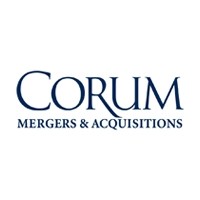The New Metrics in M&A
A new wave of financial buyers is making aggressive bids for companies, especially targeting smaller SaaS companies that serve vertical markets. They're seeking the financial predictability of subscription revenue ‒ predictability that gives them the ability to make those aggressive bids. And they’re using a range of metrics to analyze annual recurring revenue (ARR) to determine the predictability of a company’s revenue. Two of the most important of these metrics are gross revenue retention (GRR) and net revenue retention (NRR). If you are a technology CEO with any sort of recurring revenue model, it’s important to understand these metrics, especially if you are considering entering the M&A market.
ARR percentage
Buyers are more and more focusing on the percentage of total revenue that is recurring annually, as opposed to total revenue itself, when evaluating SaaS companies. This is because annual recurring revenue (ARR) quantifies a company's predictable, recurring income stream, and a high ARR percentage of total revenue signifies the sort of healthy, sustainable business model that investors highly value. Before they consider doing a deal, potential buyers of smaller SaaS companies typically require that a large percentage of the company’s yearly total revenue ‒ between 70% and 80% ‒ is recurring. However, this can vary. Some buyers may require a higher percentage or even accept a lower percentage depending on their investment thesis, as well as the company's industry, business model, or stage of growth.
Different buyers may see different revenue sources as part of ARR, such as maintenance revenue, managed services, contract renewals, and upgrades within existing customer plans. They may also differentiate between revenue contracted for a specific period versus month-to-month revenue. It's important that you have a clear agreement with potential buyers about what is included in ARR.
GRR
Gross Recurring Revenue (GRR) measures how much of a company's recurring revenue it retains from customers over a given period. It factors in customers who have reduced their spending on a company’s products or services (downsells) as well as lost customers (churn). But it does not include revenue increases from upsells, cross-sells, or price increases.
GRR can be calculated in a number of ways. Typically, buyers calculate it by looking at the recurring revenue from customers for the current month and comparing it to the recurring revenue from customers 12 months before that.
Buyers differ in the GRR value they require. Some want a GRR of 90% or more, an indication that the company is retaining almost all of its core revenue streams. Other buyers look for a value in the 80% range. A GRR below 70% can be problematic to potential buyers because it indicates that the company is losing revenue from its customers over time, perhaps due to customer dissatisfaction, lack of product or service quality, or because of competition. If your company has a low GRR, it will require careful positioning when the company is presented to buyers.
NRR
Like GRR, Net Recurring Revenue (NRR) measures how much of a company's recurring revenue it retains from customers over a given period. But unlike GRR, NRR includes revenue gains from upsells, cross-sells, or upgrades, as well as revenue losses from downsells and customer churn. It’s a way of not only showing how well a company is able to retain its customers, but also how well it’s growing revenue from them.
Buyers like to see GRR over 100%. This indicates that the company has both strong customer retention and revenue is growing fast enough within the existing customer base to make up for any downsells and customer churn. For buyers, a high NRR is a positive indicator for the future. It suggests that revenue will keep growing even if the company doesn't add new customers. Given a strong customer base, a company with a high NRR can be attractive to prospective buyers even if it has a lower growth rate.
Get professional advice
ARR, GRR, and NRR are not the only metrics that buyers look at, but understanding these are important ‒ especially if your company is a SaaS provider looking to enter the M&A market. Your financial and accounting teams need to be familiar with these types of metrics, so it’s important that you discuss this with them. You may also need to get professional advice regarding these metrics from a financial or accounting firm.
Whether your metrics are extremely positive or not, there are remarkable opportunities for technology companies in today’s M&A market. Know that Corum has years of experience advising on the sale of more technology companies than any other firm in history, an almost 40 year track record driven by a highly professional, detailed M&A process designed to get sellers an optimal outcome that includes maximized valuations, a properly negotiated transaction structure, minimized liability, and optimized taxes. So if you are considering entering the M&A market, contact Corum. Their team of experienced dealmakers, all former CEOs who have run, sold, and bought companies prior to joining Corum, will be happy to discuss your circumstances, what they're seeing in your part of the market, and help you achieve an optimal outcome.
